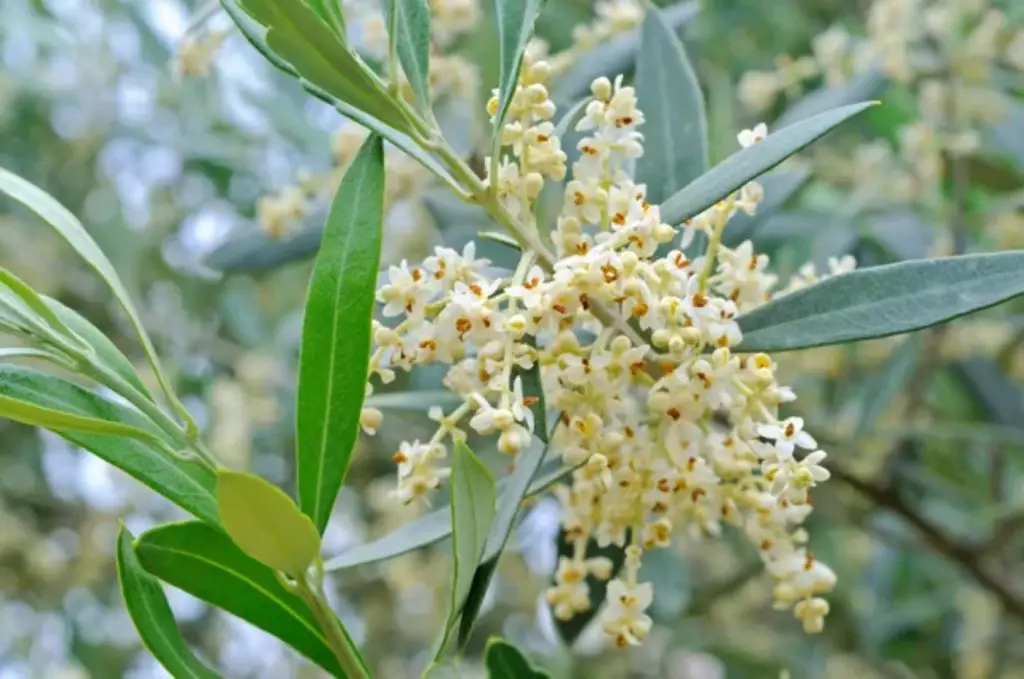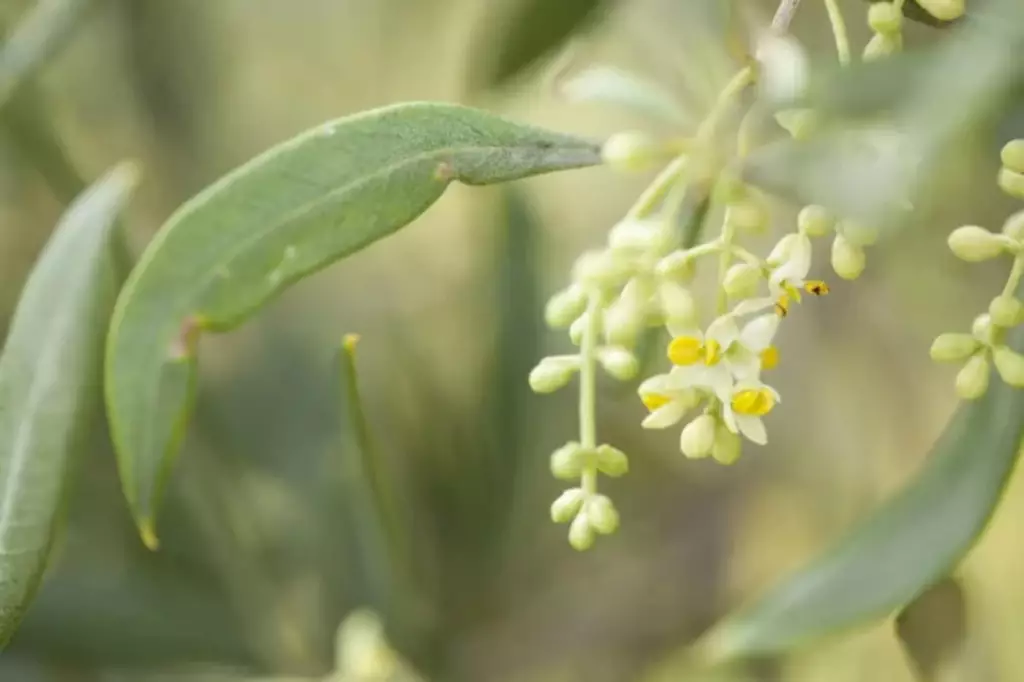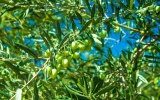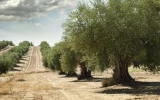When Do Olive Trees Bloom? (Flowering Season)
Olive trees enter their flowering phase annually, marking a critical period for olive production. Optimal flowering and subsequent fruit set require a delicate balance of temperatures ranging between 15°C and 25°C (59°F and 77°F), coupled with sufficient water availability. Let's explore the flowering season of olive trees, detailing the timing and environmental factors that influence when these trees bloom.
Olive trees typically bloom in the spring, with their flowering season occurring from late April to early June, depending on the climate and geographical location. The exact timing can vary based on local weather conditions and the specific olive variety.
Favorable weather during bloom, especially mild temperatures, and minimal rain, enhances pollination and fruit development. Let's find out further how the flowering period is crucial for olive production.
Summary
- Olive trees bloom in the spring, typically from March to June, with the blooming period being crucial for olive production as it affects yield.
- Olive trees enter a period of growth in spring leading to the flowering phase, followed by fruit development through summer, and harvest in the autumn, with winter being a period of dormancy.
- Olive trees are predominantly self-pollinating, but some varieties benefit from cross-pollination, which can enhance fruit yield and diversity, with pollination being a key stage in the transition from flowers to olives.

On this page:
- Typical Blooming Months for Olive Trees
- What Season Do Olive Trees Bloom?
- Regional Variations in Bloom Times
- Stages of Flower Development in Olive Trees
- The Pollination Process in Olive Trees
- How Often Do Olive Trees Bloom?
- Factors Influencing Bloom Timing
- What Happens Post-Bloom
- How Do I Get My Olive Tree to Bloom?
Typical Blooming Months for Olive Trees
Olive trees are harbingers of spring, typically adorning the groves with their blossoms during this rejuvenating season.
In the northern hemisphere, your olive tree will generally begin its flowering phase in late spring. This means that as March eases into warmer days, you can start to look out for the first signs of blooming.
However, the bulk of flowering occurs in May, reaching its full expression during this month.
Each year might vary slightly based on weather patterns, but you'll find that olive trees are fairly consistent in their blooming habits. Here’s a simple breakdown for you:
| Month | Blooming Stage |
|---|---|
| March | Early indicators of bloom start to show. |
| April | Flowers start to develop, preparing for full bloom. |
| May | Peak blooming occurs, with trees covered in delicate white flowers. |
Remember, though the blooming season is relatively short, it is a crucial time for olive trees as it sets the stage for fruit development.

Warm, sunny days of spring provide the perfect conditions for your olive trees to flourish and present their annual floral display.
What Season Do Olive Trees Bloom?
Typically, your olive tree will display small, creamy white flowers during the spring season. This bloom period is crucial as it sets the stage for olive production. The timing and health of the flowers impact the yield of olives.
The variety of olive, or cultivar, also influences the flowering time, which usually occurs from March to June, depending on the climate and region.
The life cycle of olive trees adheres to a distinct seasonal pattern, which dictates not only their growth but also the timing of the olive harvest. You'll see these patterns reflected in their spring blooms, autumn fruits, and winter rest.
Spring growth
In the spring, specifically from March to May, olive trees enter a period of growth culminating in the flowering phase. The trees dazzle with clusters of small, white flowers. This bloom marks the beginning of the olive's journey from flower to fruit.
Autumn harvest
By autumn, these blooms have given way to olives that have matured over the summer. Harvest typically occurs in the fall, when the olives have ripened and are ready for picking. This is a busy season for growers as it determines their yield for the year.
Winter dormancy
Winter brings a time of dormancy for olive trees. Though they retain their leaves, growth slows considerably, and the trees conserve energy. It's a quiet rest period before the cycle begins anew with spring's arrival.

Regional Variations in Bloom Times
| Region | Average Blooming Period |
|---|---|
| Mediterranean zones | Late April to Early June |
| Temperate zones | May to June |
| Cooler regions | Late June to July |
Olive trees thrive in the Mediterranean climate, where they originated. Yet, the precise time of blooming can differ based on where you are.
Mediterranean regions typically see olive trees beginning to bloom in late spring. The mild, wet winters and hot, dry summers of these areas set an ideal stage for flowering.
In cooler or higher altitude zones, the bloom may be delayed. Olive tree varieties also play a part; some are adapted to bloom earlier or cope with different conditions.
If you're growing olive trees outside their native climate, you might notice variations in bloom times. Local weather, the tree's microclimate, and care can influence when it flowers.
Stages of Flower Development in Olive Trees
In the life cycle of an olive tree, the development of flowers is a crucial phase preceding fruit production. A detailed visual guide of what olive flowers look like can be found in this article.
Bud formation
Olive tree flower buds are the genesis of fruiting. They begin to form as small swellings on the branches, usually in early spring. These buds carry the potential for the season's bloom, and their health is a strong indicator of future fruit production.
Despite their tiny size, they play a significant role in the tree's reproductive process.
Onset of blossoming
When conditions are right, usually around April to May in the Mediterranean, buds open to reveal delicate blossoms. An olive tree starts flowering in this period, showcasing clusters of small, creamy-white flowers.
Each blossom has a distinct appearance, with only a small percentage set to be fertilized, which underscores their significance in the tree's life cycle.
Fertilized flowers
For a blossom to transition into a fertilized flower, it must successfully undergo pollination. Once fertilized, these flowers will set the stage for fruit development, but not every blossom will bear fruit.
Only about 2% of the flowers may turn into olives. Despite the low percentage, the ample flowering ensures sufficient fruit for a healthy crop.

The Pollination Process in Olive Trees
In olive trees, pollination is a critical stage that ultimately leads to the formation of olives.
Most olive trees are self-pollinating
Olive trees are predominantly self-pollinating, meaning their flowers often contain both male and female parts. The male flowers release pollen, which can fertilize the female flowers present on the same tree. This process is primarily facilitated by the wind.
In simple terms, self-pollination requires no external pollinator, like bees, to transport pollen to the female flowers. This often increases the chances of successful pollination even without the presence of pollinators.
Some olive varieties benefit from cross-pollination
In this case, pollen from the male flowers of one tree is transferred to the female flowers of a different tree. External pollinators, especially bees, play a vital role in this process.
As bees collect nectar, they inadvertently carry pollen on their bodies from one flower to another, thus enhancing the diversity and potential fruit yield. If the pollen successfully lands on a receptive female flower's stigma, it is then fertilized, leading to olive production.
How Often Do Olive Trees Bloom?
Olive trees typically bloom once a year. This event occurs in the spring, generally between late April and early June, depending on the climate and local environmental conditions.
During their blooming period, you'll notice small, whitish flowers with four petals and a yellow center. These blossoms are often grouped in clusters up to 20 flowers.
They're not only a sight to behold but also a crucial stage for olive production, as these flowers, once pollinated, will turn into the olives you're familiar with.
Remember, the age of an olive tree can influence its blooming habits. Olive trees begin to flower and produce fruit around 3 to 5 years of age.
They're capable of producing fruit for 150-200 years, although the trees themselves can live even longer, some for as long as 500 years. To ensure a consistent and healthy blooming season, proper care and cultivation practices are essential.
Do olive trees bloom every year?
Olive trees bloom every year, typically in late spring. During this period, they produce small, white, fragrant flowers that are followed by the formation of olives if the flowers are successfully pollinated.
The yield of olives can vary from year to year based on several factors including the tree's age, the climate conditions, and how well the tree has been cared for.

Some olive trees may also experience a phenomenon known as "alternate bearing," where the tree produces a large number of olives one year (an "on" year) and then follows with a year of low production (an "off" year). Proper pruning, fertilization, and water management can help maintain consistent olive production from year to year.
Factors Influencing Bloom Timing
The bloom timing of your olive trees can be significantly influenced by specific environmental conditions such as the following:
Temperature and climate
Your olive trees are most likely to flower when the daily average temperature exceeds 18°C, usually occurring between May and June.
However, in optimal growing conditions, such as those found in the Mediterranean climate, blooming can begin as early as April.
The temperature plays a pivotal role as olive trees require a period of cool winter temperatures to initiate flowering, followed by a rise in spring temperatures to enable the process.
Water and irrigation
Adequate watering is crucial for the timing of your olive tree's blooming. Both over-watering and under-watering can disrupt the flowering cycle.
While olive trees are drought-tolerant, during the formation of flower buds and in the lead-up to blooming, providing a consistent and moderate amount of water will encourage a healthy bloom.
Light and sunlight exposure
Olive trees thrive best in conditions of full sun, needing at least six hours of direct sunlight per day to flower properly.
Light quantity affects flower formation, and trees positioned in ample sunlight typically have better flower development. If your olive trees are not getting enough light, they may experience delayed or reduced blooming.
What Happens Post-Bloom
After the bloom, an olive tree enters a critical phase where the flowers give way to fruit, and attentiveness to tree maintenance can impact both the quantity and quality of the upcoming harvest.
Fruit development
Post-bloom, the olive tree's small white flowers develop into olives. This fruit development process begins in the spring and continues throughout the summer. At first, the young olive fruits (often referred to as "fresh olives") are green and hard, but as they mature, they start to take on a darker color and softer texture.
Olive harvesting
Typically, you'll find that it's harvesting time from autumn to early winter. The timing of your harvest is crucial for defining the flavor profile of your olives. You can pick them early in the season for a fruitier taste or later for a more intense flavor.
During this harvest, the olives are either handpicked or mechanically harvested. The method used depends on the size of the orchard and the desired quality of fruit.
Tree maintenance
Even after the main event of flowering and fruit production is over, it's important to continue with maintenance to ensure your evergreen tree remains healthy.
Regular olive tree care includes pruning. Pruning helps not just for shaping the tree, but also for allowing sunlight to reach the interior branches. This helps stimulate new growth and fruit development for the next season.
How Do I Get My Olive Tree to Bloom?
To successfully encourage your olive tree to bloom, perhaps consider a combination of care practices and environmental conditions:
Ensure it receives enough sunlight
- Olive trees require a minimum of six hours of full sun daily.
- For indoor trees, positioning them near a spacious, south-facing window is ideal.
- Regularly rotate the pot by 90 degrees weekly to ensure even light distribution.
Practice proper watering habits
- Water the olive tree only when the top inch of soil is dry, avoiding overwatering.
- Opt for dryness over risking overwatering if unsure.
You can refer to this article for more tips on how to optimize the growth of olive trees through watering.
Consider the age of your olive trees
- Understand that olive trees generally start to bloom between 3-5 years after planting, with full fruit production occurring around 7-8 years.
- Patience is necessary as young trees mature.
Supply your trees with their nutritional needs
- Utilize a balanced fertilizer during the growing season to support blooming, but avoid over-fertilization to prevent potential harm.
Proper pruning is key
- Prune the tree in early spring to remove dead or overcrowded branches, which promotes better airflow, sunlight exposure, and overall tree health and flowering potential.



